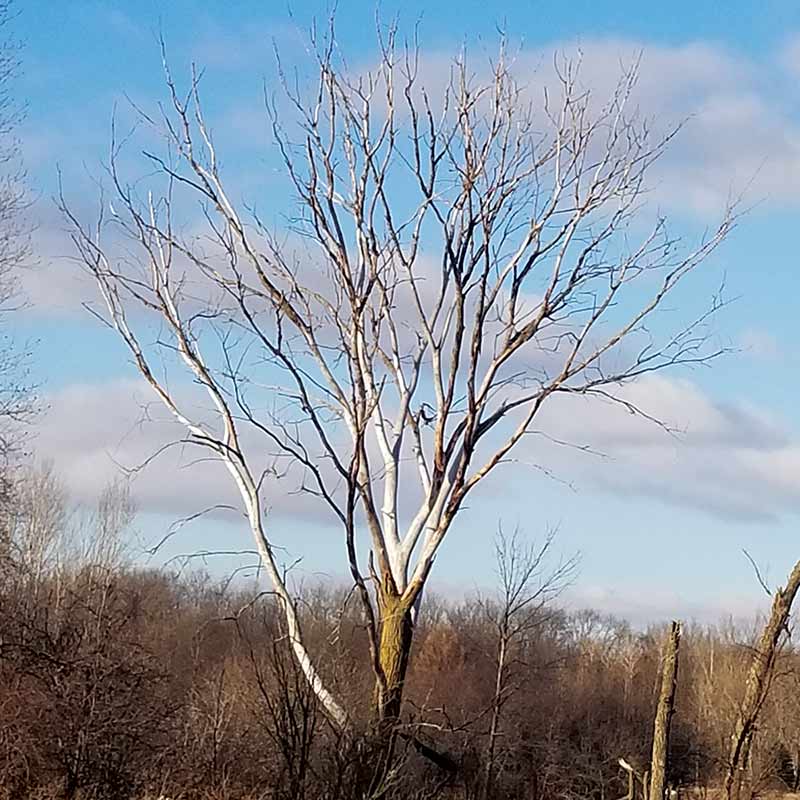Life of a Snag
The Great Outdoors | February 22, 2022

By Jackie Scharfenberg, Forest Naturalist, Wisconsin Department of Natural Resources
Don’t be frightened by the skeleton of this old snag. I may no longer produce leaves and grow, but if you look closely, you sure can find a lot a life among my dead branches, trunk, and roots.
Growth After Death
Upon my death, the fungi and bacteria moved in quickly through some broken bark. The fungi sent their mycelium into my wood, releasing enzymes to break down the cellulose and lignin in my cells. This softened the wood for those who followed. Some fungi produce beautiful fruiting bodies called mushrooms. Examples include: conks, hen of the woods, turkey tail, and oyster.
The Bugs
Next came dozens of different kinds of invertebrates (animals without backbones) that took up residence. Some beetles munched on my wood. Others, like carpenter ants, carved out their home of galleries. Decomposers such as worms and millipedes crept in from the ground level to dine on my decaying remains. These critters attracted an army of multi-legged predators: centipedes, spiders, and predator beetles.
The Birds
Do you hear that rat-a-tat-tat? That can only mean the woodpeckers, large and small, are pecking away my bark in search of tasty meals. The nuthatches and brown creepers climb up and down my trunk searching my crevices for scrumptious bugs.
Downy, hairy, red-bellied, pileated, or other woodpeckers carve out cavities in my trunk and large branches for their nests. Once they abandon them, other cavity nesters quickly move in to raise their young. Of course, each pair modifies the cavity to fit their unique needs. You may see a black-capped chickadee, white-breasted nuthatch, screech owl, house wren, or wood duck parent fly out of one of those holes. Brown creepers weave their nest of moss and twigs beneath a slab of loosened bark.
My bare dead branches make perfect resting spots or hunting perches for many kinds of birds. From the higher branches, red-tailed hawks and great horned owls scan the fields looking for their prey. Fly catchers and bluebirds perch waiting to snatch an insect from the air or snag one from the ground.
Mammals
If a cavity goes unclaimed by a bird for nesting, then a small mammal such as a grey or red fox, flying squirrel, or chipmunk may occupy it to raise their young or to take shelter from bad weather. Large cavities become prize real estate for barred owls, raccoons, opossum, and porcupines.
When elm, hickory, butternut, beach, oak, and sugar maple die, they can become good hard snags like me. We can stand for decades before toppling over. Once on the ground, other small animals like salamanders, mice, chipmunks, toads, and frogs find shelter in and under our fallen trunk and branches. The fungi, bacteria, plants, and invertebrates continue their work to decompose our wood.
Eventually, after each organism completes its work, I will become part of the soil. The spot where I once stood as a living, growing tree turns into a perfect place for a new tree to start its life.



